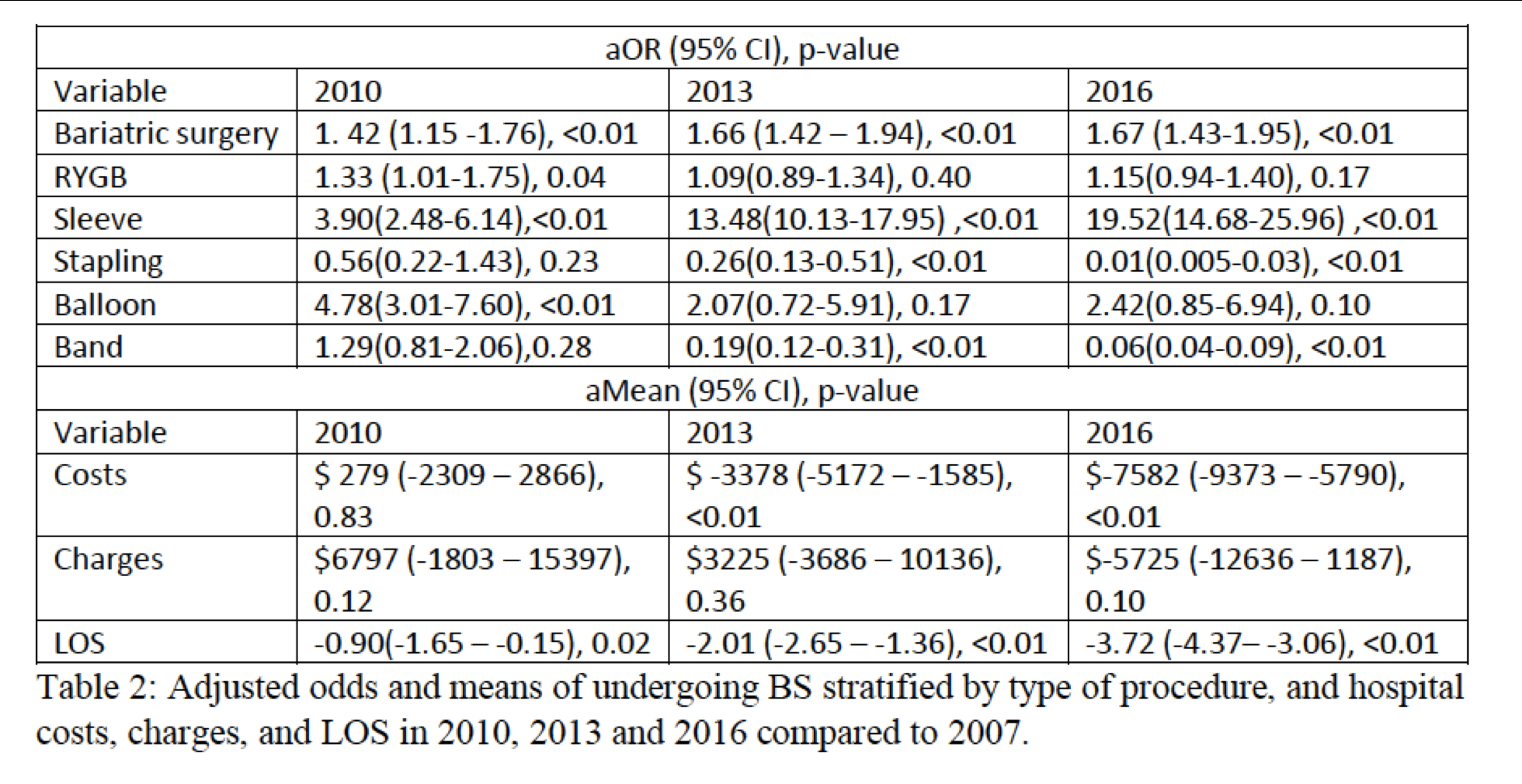NATIONAL GEOGRAPHIC SHIFTS OF BARIATRIC SURGERY IN THE PAST DECADE
Paul T. Kroner*2, Alex M. Kesler2, Christopher C. Thompson1
1Brigham & Women's Hospital, Boston, MA; 2Mayo Clinic Florida, Jacksonville, FL
Introduction
As the nationwide rates of obesity continue to increase, bariatric surgery (BS) has emerged as an intervention to reduce complications of metabolic syndrome. The different surgical options have evolved significantly, particularly in the last decade. Rates of obesity vary significantly across the US, with the highest prevalence observed in the East South Central division. There are no studies exploring geographical differences in the number of BS with temporal trends. The aim of this study is to examine the use of BS stratified by geographical census division over the last decade.
Methods
Case-control study using the NIS 2007, 2010, 2013 and 2016, the largest public inpatient database in the US. All patients with ICD10CM codes for BS were included. None were excluded. The primary outcome was determining the temporal trends in the use of BS distributed in the different US Census divisions. Secondary outcomes were determining the associated trend in additional inflation-adjusted hospital costs, charge and length of hospital stay (LOS) in patients undergoing BS in the different geographical location across the past decade. Multivariate regression analyses were used to adjust for gender, age, Charlson Comorbidity Index, income in patient zip code, hospital region, location, size and teaching status.
Results
699,001 patients who underwent BS were included in the study. The mean age was 48 years (73% were female). For the primary outcome, the adjusted odds of undergoing BS in 2016 was 1.67 (p<0.01) compared to 2007.The divisional geographic distribution of BS also changed significantly from 2007 to 2016, as increased rates were noted in the Middle Atlantic and East South Central, while decreased rates were seen in New England (Table 1). Upon stratification, a significant increase in odds of sleeve gastrectomy was noted in 2016 (OR: 19.52, p <0.01) compared to 2007.Stratification for type of BS is depicted in Table 1. For the secondary outcomes, the adjusted mean additional hospital costs, and LOS decreased from 2007 to 2016 (Table 2).
Conclusion
The rates of bariatric surgery have increased in the US in the past decade. Mainly, a significant increase in the use of sleeve gastrectomy was noted, while gastric banding has significantly fallen out of favor. A significant geographical variation in BS was also seen, increasing in Middle Atlantic and East South Central divisions. Notably, the East South Central division accounts for only 6.5% of BS, while the obesity rates in this division are significantly higher than other regions. This gap can relate to higher minority representation with reduced health care access, particularly African Americans and highlights potential areas in which further research can be performed to assess the factors that lead to these disparities.
Table 1: Crude number of BS by year, stratified by percentage completed in each US region.
Table 2: Adjusted odds and means of undergoing BS stratified by type of procedure, and hospital costs, charges, and LOS in 2010, 2013 and 2016 compared to 2007.
Back to 2019 Posters




